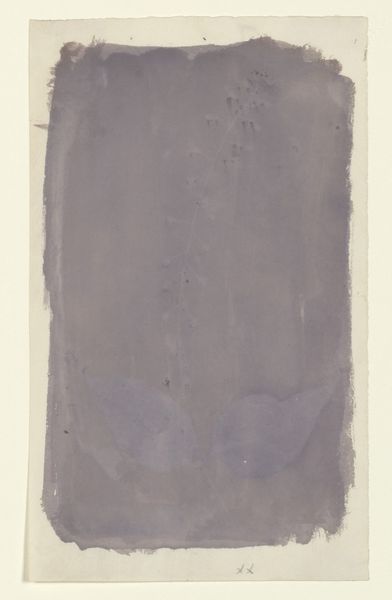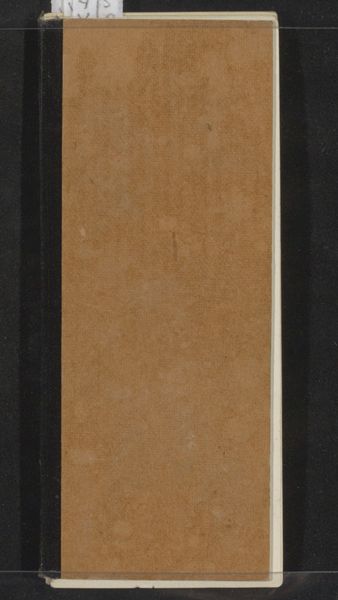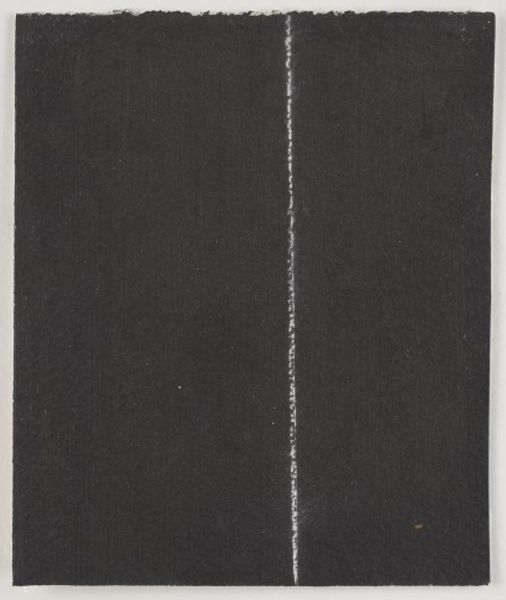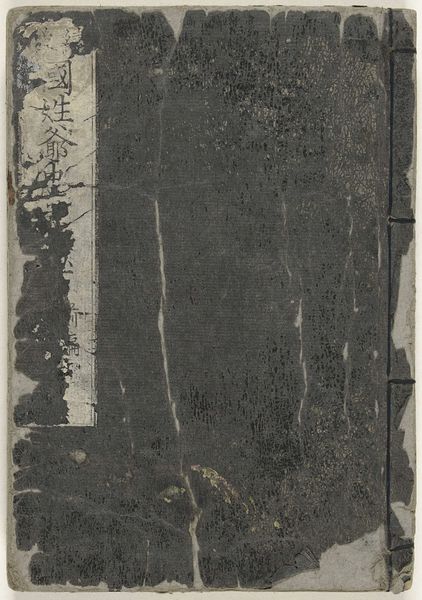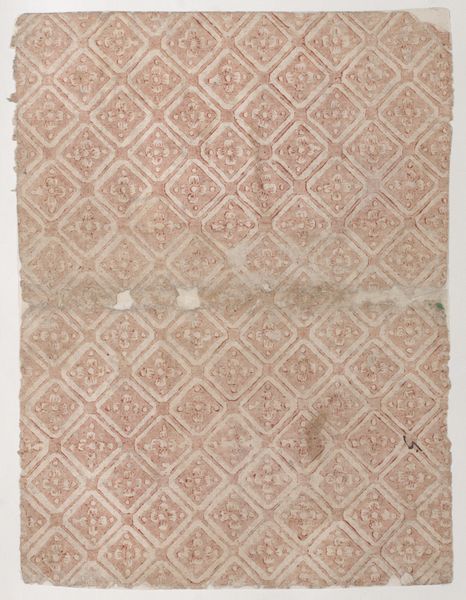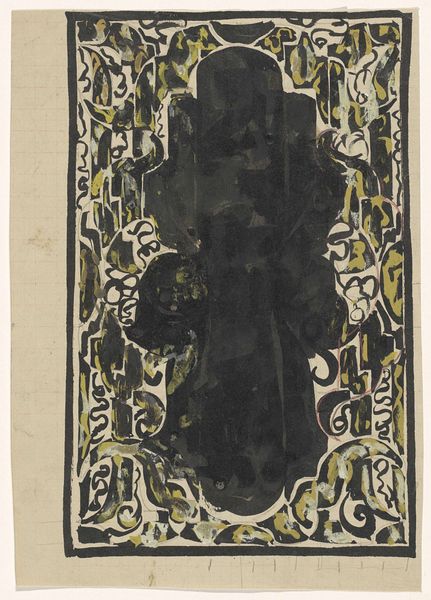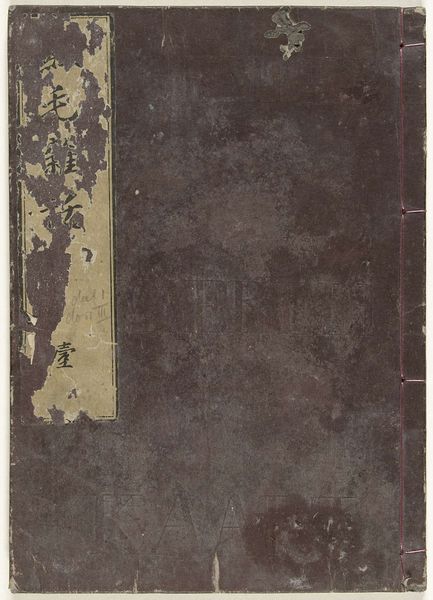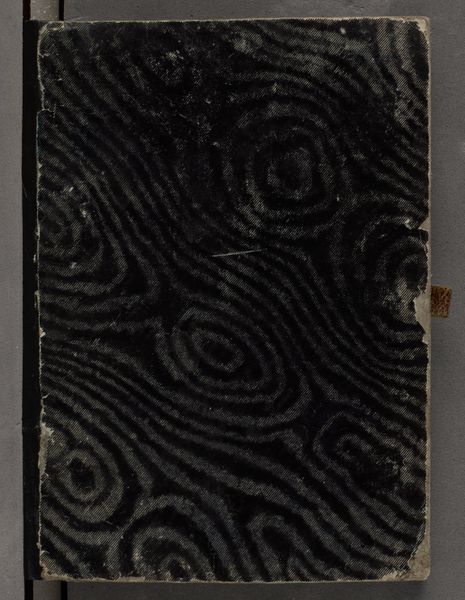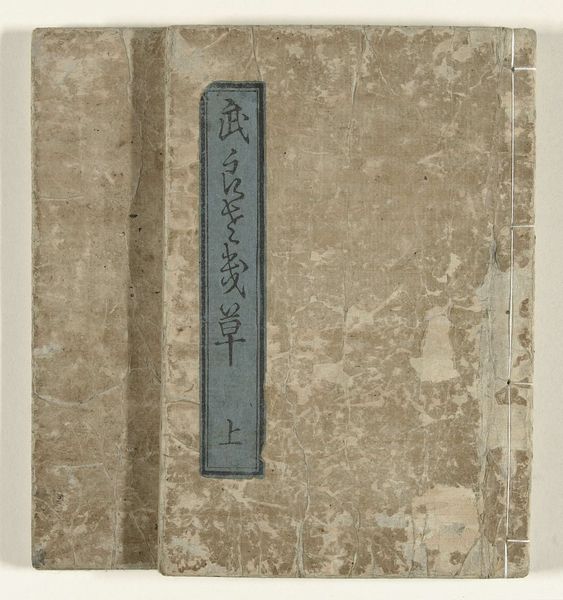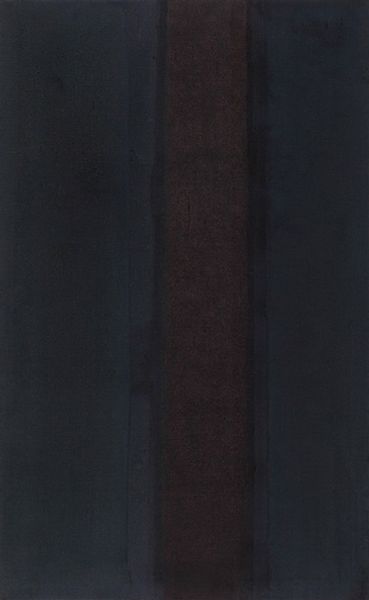
print, photography
# print
#
book
#
asian-art
#
photography
#
watercolor
Dimensions: height 222 mm, width 158 mm
Copyright: Rijks Museum: Open Domain
Curator: This is "Schetsboek van Bunsen," or Bunsen's Sketchbook, dating back to 1855. It resides here at the Rijksmuseum and is attributed to Seki Bunsen. Editor: It’s intriguing! It gives off a quiet, almost somber mood. The indigo-blue patterned cover contrasts starkly with the aged label—a simple book with perhaps untold stories within. Curator: Let's consider the materials; it appears to combine print and possibly watercolor techniques. The cover, especially, with its repeating geometric pattern, has the feel of textile production integrated with printed elements. The bookbinding, too, is clearly hand-stitched. I wonder about the labor and the specific paper-making processes employed to produce such a material object during that period. Editor: Yes, the very format speaks of a time and place. Given that it's called a "sketchbook", I’m interested in what constitutes sketching during this historical period for Bunsen. What sort of visual language did he use, and how does it reflect broader cultural narratives? What might this imply about his social status, the accessibility of artmaking in Japan at the time, and art as a form of identity and social commentary? Curator: A close examination of Seki Bunsen's background is critical. How did the societal and political landscape in Japan shape his artistry? Understanding this allows us to examine the art through a lens of race, identity, and artistic expression. The intersection of personal experiences and historical contexts shapes an artist’s work in profound ways. Editor: It all boils down to the act of creation: the sourcing, the craft, and its endurance. By understanding the production, and how they tie back to a certain context, we’re acknowledging both its creation and creator within society at large. The way this object feels is really a narrative of production meeting artistic intention. Curator: This conversation reminds me that historical context and cultural analysis deepen the emotional connection to art. We unveil deeper understandings that are not immediately visible. Editor: Absolutely. By contemplating process and impact, and looking beyond immediate visual impact, the artistic piece fosters a relationship to our broader existence.
Comments
No comments
Be the first to comment and join the conversation on the ultimate creative platform.



